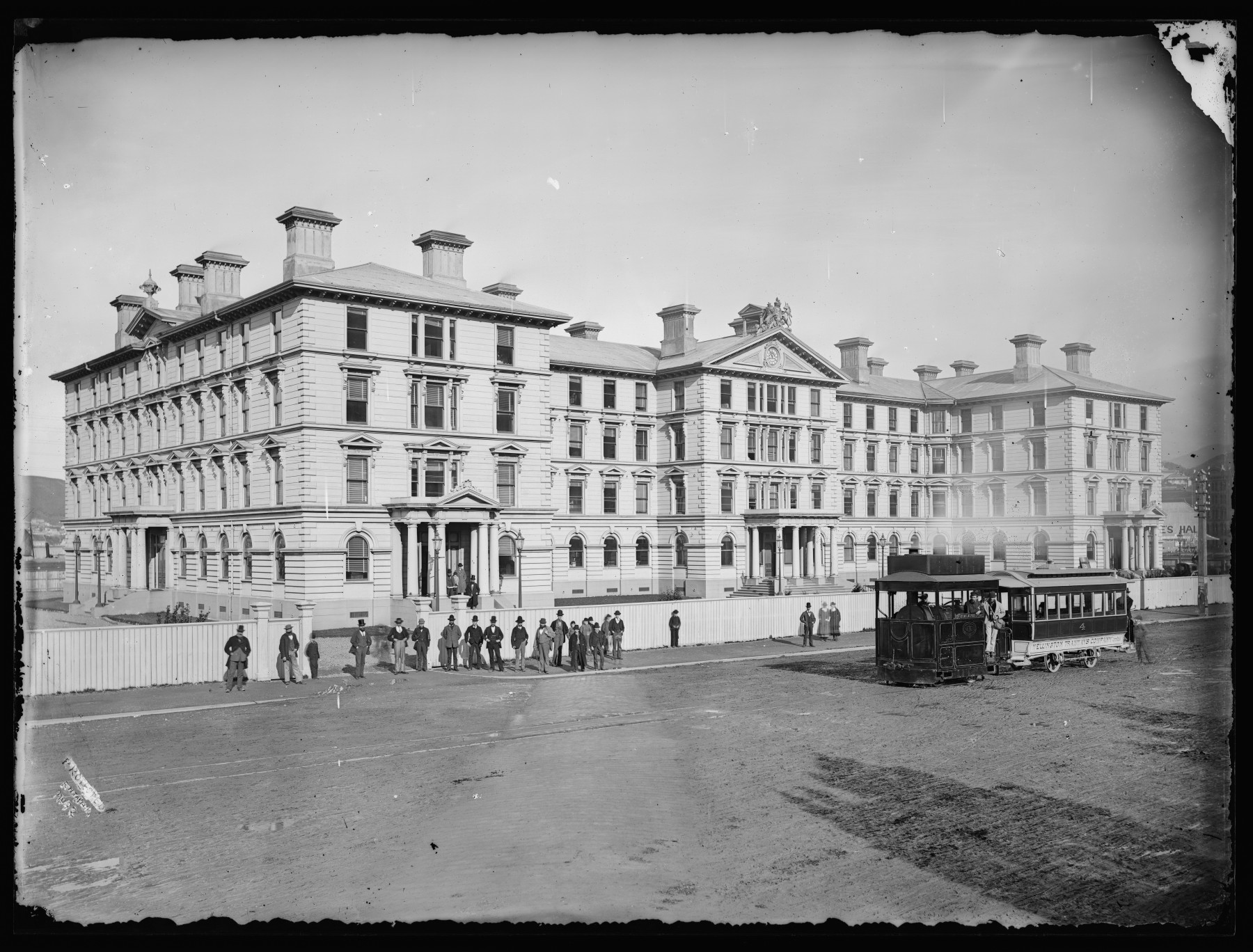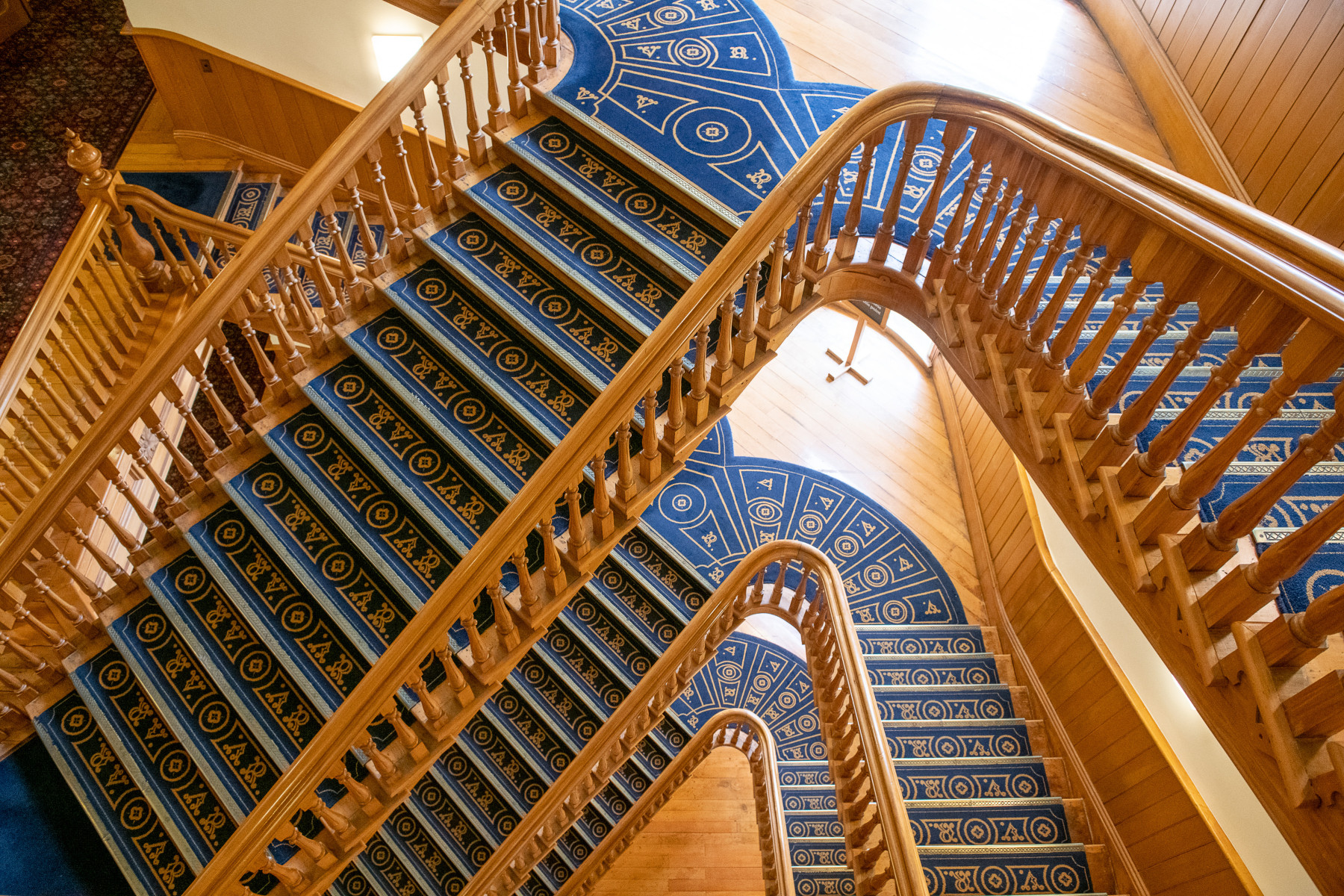An introduction to Old Government Buildings
It’s one of the world’s greatest wooden buildings, has an address on busy Lambton Quay in Wellington and for years was the engine room of our fledgling democracy, yet for whatever reason the Old Government Buildings often fly under the radar for passers-by. Few would know that behind the four-storey Italianate façade is a labyrinth of offices that once housed the entirety of the Wellington-based civil service as well as the New Zealand Cabinet, and the Native Land Court. With the exception of political history junkies, few would ever have stepped inside the first-floor Cabinet room where the business of state was conducted.
When you venture into the building, the first impression will be of the sheer volume of kauri on display – 2650 cubic metres, to be precise, including floors, weatherboards, finishings and two grand staircases, with Tasmanian hardwood used for the structural framing and to strengthen the building. Your second response may well be that this structure is very much a monument to colonialism, and that the story it tells is dominated by the usual suspects, names such as Ballance, Vogel, Massey and Seddon – although you’ll find that there is much more to it than that.

Government Buildings, 1879, Wellington, by James Bragge. Purchased 1955. Te Papa (D.000007)
First, though, some background. Aotearoa New Zealand’s first and only Colonial Architect William Clayton designed the building in the style of a stone palace to convey qualities of strength and stability, but the government of the day opted for timber to save money. When it was completed in 1876 – the year in which provincial governments were abolished and a central government established – it was the world’s second largest timber building after the Tōdai-ji Buddhist temple complex in Nara, Japan. Following two subsequent extensions, the building totalled 143 rooms, although the government soon outgrew it. By 1990, the last public service department had moved out and the building was empty. In 1994, the Department of Conservation began on a landmark two-year, $25 million restoration, after which Victoria University’s Law Faculty moved in. The grounds, ground floor displays and Cabinet room remain open to the public.
Heading on into the building, discover the place’s many charms, intrigues and quirks by joining a guided tour. You’ll get a behind-the-scenes insight into the building’s construction and changes over time, including the seismic strengthening work done in the 1980s and ’90s. Don’t neglect the groundfloor displays and interpretation rooms, the storied Cabinet room with its 12-person meeting table and view across to the Beehive, and the two grand hanging timber staircases. Spend some time, too, exploring the grounds, which include rare species of native flora, as well as two sizeable kauri trees planted on either side of the entrance in the 1950s as a tribute to the building’s defining material.

Photo: Gerry Keating
Afterwards, wander across the road to the parliamentary complex and up the hill to Old St Paul’s, or head down to the waterfront and visit the Wellington Museum of City and Sea, which shares the fascinating stories of the Wellington region, all housed within the beautiful 1892 heritage building designed by leading architect Frederick de Jersey Clere. If you’re feeling peckish, check out nearby restaurants on the waterfront.

